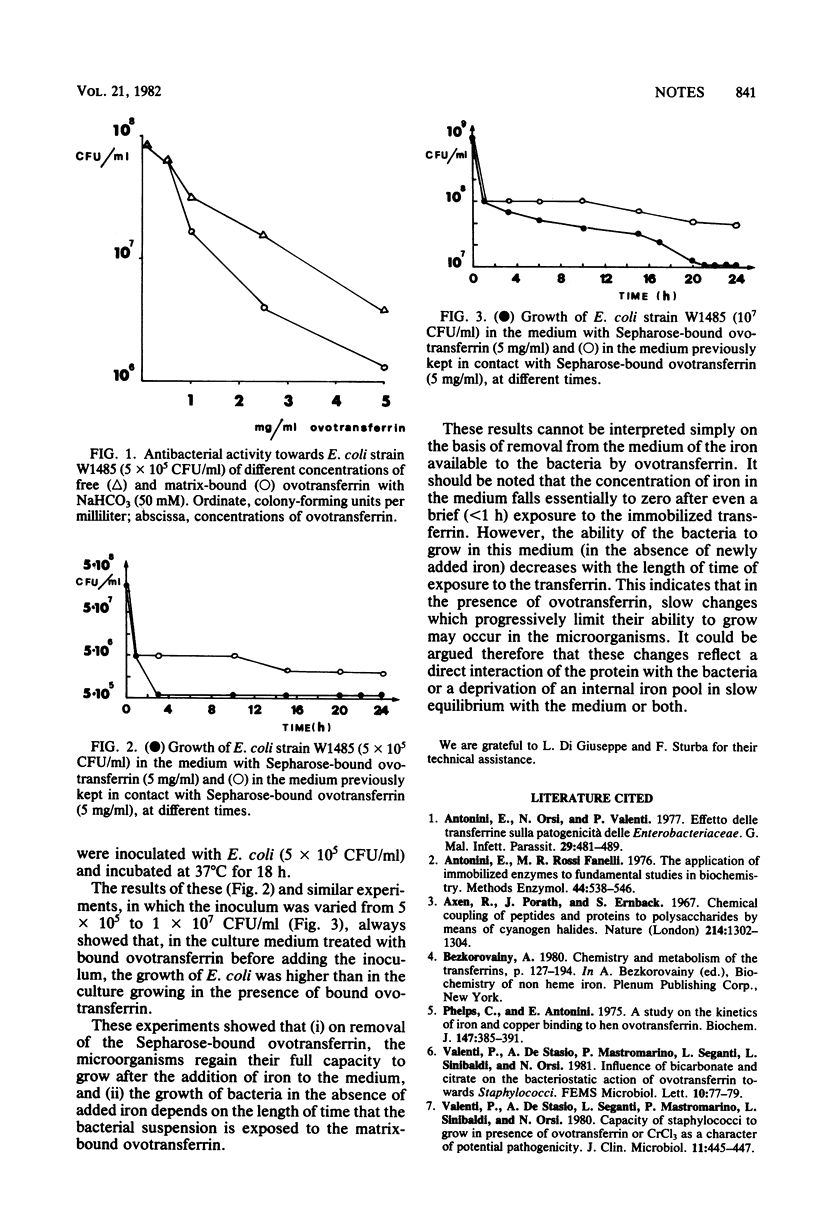Abstract
Ovotransferrin immobilized by covalent linkage to Sepharose 4B showed a bacteriostatic effect towards Escherichia coli similar to that of free ovotransferrin. The growth of the bacteria, after exposure to the gel-bound ovotransferrin and its removal, depended on the length of exposure. The results suggest that the antibacterial activity of transferrin is not due simply to the removal of iron from the medium.
Full text
PDF

Selected References
These references are in PubMed. This may not be the complete list of references from this article.
- Axén R., Porath J., Ernback S. Chemical coupling of peptides and proteins to polysaccharides by means of cyanogen halides. Nature. 1967 Jun 24;214(5095):1302–1304. doi: 10.1038/2141302a0. [DOI] [PubMed] [Google Scholar]
- Phelps C. F., Antonini E. A study of the kinetics of iron and copper binding to hen ovotransferrin. Biochem J. 1975 Jun;147(3):385–391. doi: 10.1042/bj1470385a. [DOI] [PMC free article] [PubMed] [Google Scholar]
- Valenti P., De Stasio A., Seganti L., Mastromarino P., Sinibaldi L., Orsi N. Capacity of staphylococci to grow in the presence of ovotransferrin or CrCl3 as a character of potential pathogenicity. J Clin Microbiol. 1980 May;11(5):445–447. doi: 10.1128/jcm.11.5.445-447.1980. [DOI] [PMC free article] [PubMed] [Google Scholar]


